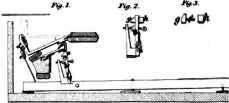|
Brand |
Image |
Info |
Addresses |
|
|
|
|
|
|
DALTON Charles |
 |
'Music Warehouse' ca. 1843-46
|
28, Castle Street (xx1843), 14, Castle
Street (y1846), Belfast |
|
DAVIS John |
 |
'Piano-forte-maker' ca. 1835;
'Piano forte-tuner & repairer' ca. 1842-47
|
32, Grafton Street (x1835), 23, Andrew Street (*1842), 41, Denzill Street (*1847), Dublin |
|
DEANE W. S. |
 |
Pianoforte-maker and/or pianoforte dealer ca. 1906
'Musikal.- u. Piano-Handlung' (x1906) |
45, Main Street (x1906), Bangor |
|
DELANY John |
 |
'Musical Instrument Maker' ca. 1802-35 |
117, Britain Street (*1802), 31, Great Britain Street (**1830)(*1832)(x1835),
Dublin |
|
DEMPSEY Isaac |
 |
'Piano-Forte and Cabinet Maker' ca. 1842 |
9, Dorset Row (*1842), Dublin |
|
DIXON & Sons |
 |
Pianoforte-maker and/or pianoforte dealer ca. 1906
'Musikal.- u. Piano- u. Musikinstr.-Handlung' (x1906) |
111, St. Stephen's Green (x1906), Dublin |
|
DOLLARD Matthew |
 |
'Musical Instrument Maker' ca. 1830-35 |
28, Essex Quay (x1830)(*1832)(x1835), Dublin |
|
DOWNHAM A. F. |
 |
Pianoforte-maker and/or pianoforte dealer ca. 1912
'Piano- u. Musikinstr.- u. Saiten-Handlung,
sowie Agentur' (x1912) |
114, North Street (x1912), Belfast |
DU BOCHET Henry
| DU ROCHET


 Image of a patent of 1843,
The London journal of arts and sciences and repertory
of patent inventions ..., 1844, p. 477 Image of a patent of 1843,
The London journal of arts and sciences and repertory
of patent inventions ..., 1844, p. 477 |

 Patent of 1843 :
"Henry Du Rochet, of South Mall, in the city of Cork, Ireland,
pianoforte tuner, for a new method of making pianofortes. February 11 ;
six months."
The Pianoforte, its origin, progress, and
construction , Edward F. Rimbault, 1860, p. 156 - or - "A.D. 1843, February
11. — N° 9631. DU BOCHET, Henry. — A new method of making pianofortes. -
A new combination of mechanical means by which the desired effect of the
repeating touch is better than heretofore obtained in grand square
pianofortes, to which class of instruments alone the invention is
applicable. A block of wood, bevelled on one side, is fixed at the upper
extremity of the clapper of the grasshopper by means of a wire firmly
fixed in its under surface. The lower end of this wire is made into a
screw, and a corresponding female screw deep enough to adjust the block
is made in the clapper. A piece of felted cloth is placed at the front
of the check, as at present used, extending in above the head of the
check, so as to check the hammer at a point between the check and the
string when the key is struck with less force than is necessary to bring
it down to the check. By this my new method of making grand square
pianofortes, I obtain a repeating touch which can be made available at
any required depression of the key. I also obtain, independently of the
repeating touch, an increased facility by means of the screw above
described, of regulating the action. A mode is described by which the
repeating touch can be effected without having recourse to the
regulating screw."
Patents for Inventions: Abridgments of
Specifications Relating to Paints, 1871, p. 141-142
Patent of 1843 :
"Henry Du Rochet, of South Mall, in the city of Cork, Ireland,
pianoforte tuner, for a new method of making pianofortes. February 11 ;
six months."
The Pianoforte, its origin, progress, and
construction , Edward F. Rimbault, 1860, p. 156 - or - "A.D. 1843, February
11. — N° 9631. DU BOCHET, Henry. — A new method of making pianofortes. -
A new combination of mechanical means by which the desired effect of the
repeating touch is better than heretofore obtained in grand square
pianofortes, to which class of instruments alone the invention is
applicable. A block of wood, bevelled on one side, is fixed at the upper
extremity of the clapper of the grasshopper by means of a wire firmly
fixed in its under surface. The lower end of this wire is made into a
screw, and a corresponding female screw deep enough to adjust the block
is made in the clapper. A piece of felted cloth is placed at the front
of the check, as at present used, extending in above the head of the
check, so as to check the hammer at a point between the check and the
string when the key is struck with less force than is necessary to bring
it down to the check. By this my new method of making grand square
pianofortes, I obtain a repeating touch which can be made available at
any required depression of the key. I also obtain, independently of the
repeating touch, an increased facility by means of the screw above
described, of regulating the action. A mode is described by which the
repeating touch can be effected without having recourse to the
regulating screw."
Patents for Inventions: Abridgments of
Specifications Relating to Paints, 1871, p. 141-142
|
Pianoforte-Tuner ? ca. 1843


(continuation)
"To Henry Du Bochet, of 46, South Mall, in the city of Cork, Ireland,
piano-forte tuner, for a new method of making piano-fortes.—[Sealed 11th
February, 1843.]
This invention relates to the class of instruments termed "grand square
piano-fortes;" and is shewn in Plate XII., at fig. 1, which represents
the "action" of one of these pianofortes. The improvements consist,
firstly, in the application of a small block of wood a, (bevilled on one
side,) to the upper end of the clapper b, of the hopper; from the under
side of which block a, a wire c, with a screw formed upon it, projects,
and is screwed into the head of the clapper; so that by turning the
wire, the height of the block may be regulated with great exactness.
Secondly, in fixing a piece of felted cloth or other elastic substance
d, to the front of the check e: which cloth rises about a quarter of an
inch above the head thereof, to check the hammer at a point between the
said check and the string, when the key is struck with less force than
is necessary to bring the hammer down to the check. The object of these
improvements is to obtain a repeating touch which can be made available
at any required depression of the key.
In cases where it is not considered requisite to use a regulating screw
c, as above described, for the purpose of raising or lowering a block a,
on the top of the clapper of the hopper, the repeating touch is obtained
by altering the hopper in the manner shewn at fig. 2, combined with the
application of the felted cloth to the check. A hole, one-eighth of an
inch in diameter, is bored through the upper end of the clapper b, at
about three-eighths of an inch from the top; through this hole is passed
a piece of wire f, of a thickness equal to one-fourth the diameter of
the hole, and threefourths of an inch long, with a screw formed upon it
from one end to the other; one end of the wire is screwed into a small
block of wood g, (see the detached view, fig. 3,) bevilled in a similar
manner to the block a, and on the other end of the wire is a wooden nut
or button h, by means of which the block g, may be fixed at any position
within the range of the hole.
The patentee says, that for instruments of an inferior description, he
glues the block g, to the clapper.
He claims as his invention the new method of making piano-fortes, as
above described, being a new combination of mechanical means, by which
the desired effect of the repeating touch is better than heretofore
obtained in grand square piano-fortes.[Inrolled in the Inrolment
Office, August, 1843.]"
The London journal of arts and sciences and
repertory of patent inventions ..., 1844, p. 266
|
46, South
Mall (*1844), Cork |
|
DYKE Richard William |
 |
'Music Warehouse' ca. 1843-46
|
25, Castle Place (xx1843)(y1846), Belfast |
|
|
(*1802): 'The
Gentleman and Citizen's Almanack, for the Year of Our Lord', 1802,
p. 38
(x1830):
'Wilson's Dublin Directory for the year 1830', p.
63
(*1832): 'The
Gentleman's and citizen's almanack, for the year 1832', p. 66/68
(archive.org)
(x1835): 'Dublin
Almanac and General Register of Ireland', 1835, p. 255/401
(*1842): 'Gentleman's
and Citizen's Almanack', 1842, p. 773-774
(xx1843): 'Post
Office Belfast Annual Directory for 1843', p. 304
(y1846): 'Slater's National Commercial Directory of Ireland; Including in Addition to ...', 1846,
Belfast p. 409
(*1847): 'The
Dublin almanac, and general register of Ireland, for 1847',
p. 894
(*1860): 'The
Pianoforte, its origin, progress, and construction', Edward F. Rimbault,
1860, p. 156
|
|
(x1906): 'Weltadressbuch
der gesammten Musikinstrumenten-Industrie', 1906,
Bangor p. 375,
Dublin p. 396 (digital.sim.spk-berlin.de)
(x1912): 'Welt-Adressbuch der gesamten Musikinstrumenten-Industrie', 1912,
Belfast p. 504-505 (digital.sim.spk-berlin.de)
(¹): 'Histoire de piano de 1700 à 1950',
Mario Pizzi, 1983
(²): 'Makers of
the Piano 1700-1820' and 'Makers of the Piano 1820-1860', Martha Novak
Clinkscale, 1993
|


© Copyright all rights reserved | |
![]()
![]()
